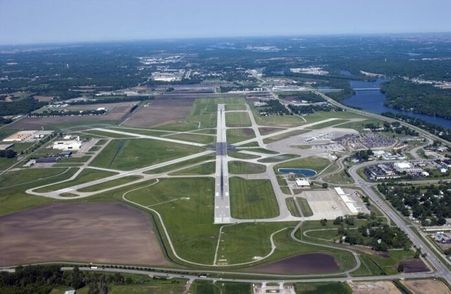
Ben Leischner, Executive Director of the Quad Cities International Airport, reported that there are more than 1,400 people who work on airport property with an economic impact of more than $700 million. Passenger numbers in 2019 were 721,999 in 2019 as compared to 306,149 in 2020. The lowest volume was at the outset of the pandemic in April 2020 with 95% decline in passengers. The year-end volume for 2021 was 493,384.
Services to Denver, Minneapolis and Detroit were temporarily suspended; Denver restarted February 2021 and Minneapolis in June 2021. Delta has not restarted Detroit service, which is on indefinite hold. Overall, the airlines have reduced schedules, which affects passenger numbers. As of Thanksgiving weekend 2021, air travel had recovered 94% from 2019 numbers. To offset payroll costs, debt service, and COVID related expenses, the airport has accessed CARES, CRRSAA, PPP, and ARPA funds.
Currently, the airport authority’s focus for air service is one providing regional and local business data to supplement data the airlines already access. The airlines continue to grapple with pilot and other staffing shortages, aircraft limitations, and rising fuel costs, which limit new service capabilities.
While the industry continues to move toward stabilization, the airport authority has pursued a number of capital investments, including an $850,000 rapid response vehicle, improved public address system, and $8 million solar system powering about 50% of the airport’s power consumption at no cost to the airport. Another $10 million runway and taxiway realignment will be completed in November 2022. The project received 100% federal share for this safety project.
Under the Rebuild Illinois program the airport will receive $5.6 million for two projects: realignment of Indian Bluff Road to address safety concerns; and general aviation ramp development. Mr. Leischner said a $40 million terminal improvement project focuses on redesigning the front facing terminal’s curbside drop-off area, ticketing atrium, and baggage areas with the addition of new restrooms to exceed ADA standards and meet user needs.
